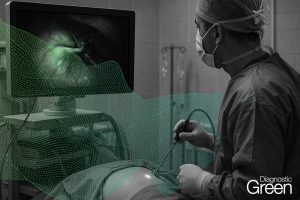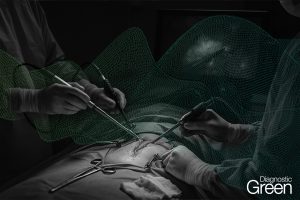Chyle leak following injury to the thoracic duct (TD) is an uncommon but serious complication of cervicothoracic procedures, including neck dissection and oesophagectomy, and has significant morbidity and mortality. We aimed to investigate the efficacy of indocyanine green (ICG) fluorescence in facilitating intraoperative TD visualisation and preventing chyle leaks. A systematic review and meta-analysis was conducted following the Preferred Reporting Items for Systematic Reviews and Meta-Analyses (PRISMA) standards for studies that assessed ICG for TD visualisation in cervicothoracic procedures. The primary outcome measure was TD visualisation using ICG. Secondary outcomes included rates of chyle leak detection, visualisation rate in white light, and time from injection to visualisation. Twelve studies enrolling 475 subjects met the inclusion criteria. The TD visualisation rate with ICG was 93.3% (SE 0.013, p < 0.001) compared with 54.3% (SE 0.065, p < 0.001) in white light. Detection rates for intraoperative chyle leak were higher using ICG compared with no ICG use: 74% (SE 0.047, p < 0.001) vs 17.5% (SE 0.086, p = 0.043), respectively. ICG reduced rates of postoperative chyle leak from 10.1% (untransformed proportion metric: 0.101 (0.045, 0.157), p < 0.001) to 3.9% (SE 0.021, p = 0.061). Mean time from ICG injection to TD visualisation was 83.94 minutes (p < 0.001). ICG offers an effective method of TD visualisation in cervicothoracic surgery. It can reduce rates of chyle leak and mitigate adverse sequelae from inadvertent duct injury. High-quality randomised controlled trials are required to improve the evidence base.




